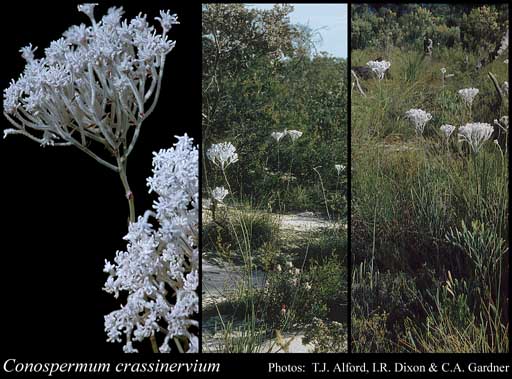- Reference
- A.DC., Prodr. 14:317 (1856)
- Conservation Code
- Not threatened
- Naturalised Status
- Native to Western Australia
- Name Status
- Current
Tufted, non-lignotuberous shrub, 0.6-1.5 m high. Fl. white, Oct to Dec or Jan to Apr. White, grey, yellow or brown sand, over laterite or limestone. Hillslopes, sandplains.

Scientific Description
Shrubs, 1-1.5 m high; branchlets hairy. Leaves alternate, 50-390 mm long, 3-15 mm wide, hairy; lamina flat, widest around the middle, entire, erect. Inflorescences without leaves, the flowers dispersed singly, white, hairy; floral bracts 5-9 mm long, hairy. Perianth 5-8 mm long, irregular, hairy; upper lip 1-1.5 mm long, hairy; lower lip 1-1.5 mm long, hairy. Nut 2.5-3 mm long. Flowers in January, November or December. Occurs in the South-west (SW) Botanical Province(s), in the Geraldton Sandplains (GS), Swan Coastal Plain (SWA), Avon Wheatbelt (AW) or Jarrah Forest (JF) IBRA subregion(s).
Distribution
- IBRA Regions
- Avon Wheatbelt, Geraldton Sandplains, Jarrah Forest, Swan Coastal Plain.
- IBRA Subregions
- Dandaragan Plateau, Katanning, Lesueur Sandplain, Northern Jarrah Forest, Perth.
- IMCRA Regions
- Central West Coast.
- Local Government Areas (LGAs)
- Carnamah, Chittering, Coorow, Dandaragan, Gingin, Moora, Swan, Waroona.